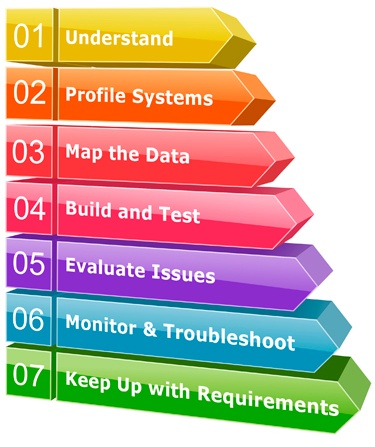Written by Rich Murphy, Product Director - iatricSystems

I recently heard the best analogy that sums up what EHR optimization is all about. They said:
“just having the data in the system, but not being able to access it easily, is like having all the records in a gigantic filing cabinet that you have to manually search through each time you need information.”
Those days aren’t too far in the past, but can you imagine still having to do this today, or worse, making clinical decisions without any data at all. For some, this is still the reality, at least to some degree. There’s a big need for more EHR Optimization!
There are so many challenges that could keep you from succeeding in meeting your EHR optimization and interoperability goals, that I could write a lot more blog posts on that topic alone (and I probably will.)
However, there are a few challenges that I see a lot that I want to focus on today. Those are:
These challenges were validated in a survey by Healthcare Informatics, “Challenges IT Leaders Face in Completing Interface Projects.” (Check out this infographic for a summary of the study).
Key challenges with achieving EHR Optimization – Planning and Resources
According to the same Healthcare Informatics survey:
If you fall within these percentages, does this mean that you are doomed to failure? Not necessarily, there is still hope!
Both of these factors — lack of planning, and limited resources — lend themselves to an even greater need to put a formal process in place that can be repeated time and again.
Creating a Formal Process
The good news is, creating a formal process around integration can be done. It is a matter of setting your goals and focusing on the execution.
I have used a seven-step process with our customers — it helps keep the team organized and drives execution.

The seven steps are:
Having the Right Resources
The second challenge that I hear a lot about from customers is that they struggle to find the right resources with the right experience to implement their interfaces or interoperability strategy. (Perhaps this is because a lot of the people that I talk to are coming to us for help to make up for not finding people to hire who have these skills.)
Some of them tell me it’s more cost effective for them to outsource the work to the experts, than to hire full-time staff. And, their existing staff is busy on other projects.
So, how do you know what is the right decision for you? There are a lot of questions that you can ask yourself. (Some are listed in this checklist).
The main point here is that you have to weigh a few factors to make your decision:
For more details about these steps, and to read about how to advance your EHR Optimization including how to overcome your internal IT challenges, download this eBook below.
{{cta('3e005bbe-c090-4340-a684-43825e60dc3c')}}